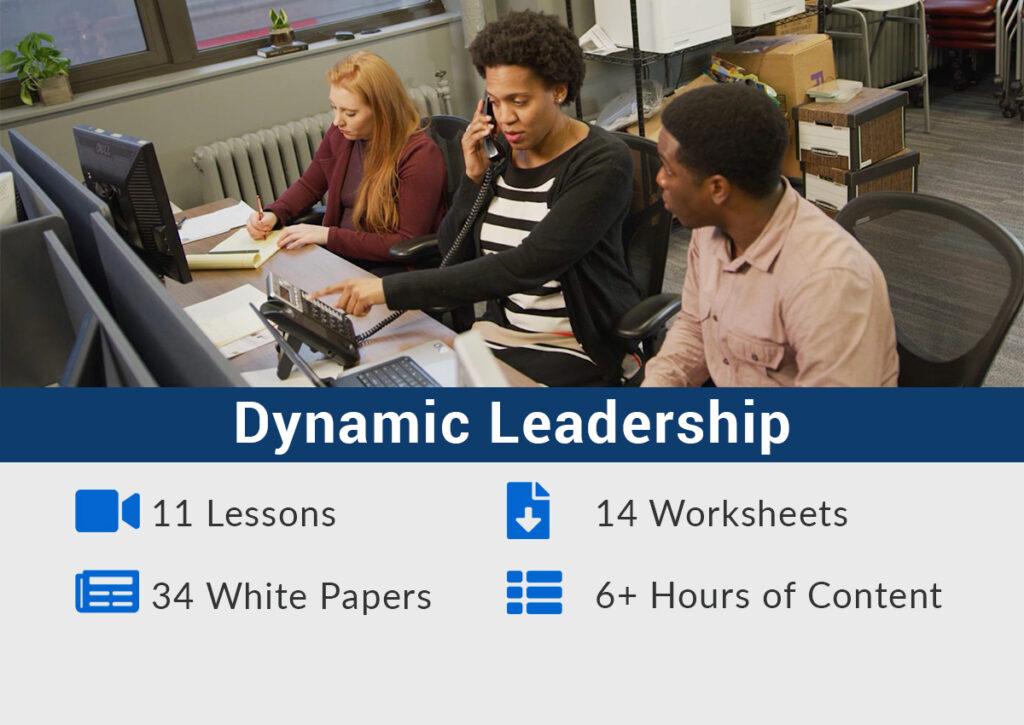DYNAMIC LEADERSHIP | ON-DEMAND COURSES
Hold More Effective Meetings
Learn the two crucial steps to effective meeting management: planning a meeting and leading an effective meeting.
Meetings are an essential part of any business. Face-time allows for clear communication and effective decision-making that helps teams accomplish goals faster. But all too often, meetings run long and fail to keep people engaged.
We’ve all been there. You know the kind; the ones seem to last an eternity, with no clear agenda.
They might look something like this:
These types of meetings not only zap energy, but they cost you time and money. Without a clear purpose and outcome, meetings can feel like a waste of time.
Every meeting should have an ROI. With technology and remote working, it is now more important than ever to understand how to run effective meetings that keep people engaged and provide clear next steps.
What is an Effective Meeting?
Effective meetings are thoughtfully planned and executed meetings that bring a selected group of people together to solve a specific outcome. Often, people use meetings to share information. While that can be essential, effective meeting strategies to help a team come to a decision, brainstorm new ideas or workshop a solution to a problem.
Learning how to run effective meetings is not only great for productivity, but good meetings also inspire greater team collaboration, directly affecting employee morale.
This article will break down the two crucial steps to effective meeting management: planning a meeting and leading an effective meeting.
Planning the Meeting
In this video, Casey Clark, CEO and Co-Founder of Cultivate Advisors, outlines how to plan a meeting, from deciding who to invite to creating the purpose, outcome, and agenda you to will follow to ensure every session ends with a decision.
Casey makes a great point; every meeting needs a plan.
So often, we schedule meetings that don’t need to be meetings. If it can be communicated in an email, no meeting is necessary. So, when planning a meeting, the first thing you ask yourself is: Why are we meeting?
With today’s technology, there are many ways to communicate electronically. Again, think of the outcome; don’t schedule a meeting if it can be resolved with a quick email or phone call.
Beyond wasting time, you also have to consider the cost of the meeting. If everyone earns $50/hour and 6 people attend the meeting, that’s $300 per hour. Are you going to see a return on that investment?
With this in mind, every meeting should serve a purpose and should be outcome-driven. Setting an outcome sets the foundation for building your agenda and deciding what materials need to be prepped. It lets you know how much time you will need and whether or not a presentation is necessary. Furthermore, it helps you begin to identify the roles each attendee holds in the meeting. By sharpening your focus, you’ll increase the chances of achieving your desired outcome.
To prepare a plan, consider the following factors:
- Priorities: what absolutely must be covered?
- Results: what do you need to accomplish at the meeting?
- Participants: who needs to attend the meeting for it to be successful
- Sequence: in what order will you cover the topics?
- Timing: how much time will you spend on each topic?
- Date and time: when will the meeting take place?
- Place: where will the session take place?
Decide who to invite.
Meetings can help obtain buy-in and consensus from the attendees. If you need a collaborative decision to move forward, a productive meeting can help develop options, pros/cons, and alternate thought patterns to help arrive at a consensus. If your team is part of this decision-making process, they are more likely to have buy-in to the outcome and next steps.
However, deciding on the guest list can be a challenge. Often, leaders will extend an invitation to the whole staff, or an entire department, without giving any thought to each individual’s role. Depending on the agenda, you will want to filter your guest list. Historically, the more people in a meeting, the less responsibility each person has; if people feel expendable, they won’t follow up on the items discussed. Limiting the number of ‘spectators’ will help you keep the meetings shorter, more engaging, and easier, so you’ll end with clear action steps for everyone involved.
Schedule the meeting and assign any prep ahead of time.
Time is valuable and, with the amount of time we all spend in meetings, you owe it to both yourself and your team to streamline the meeting as much as possible.
The first step in streamlining your meeting is to decide how much time you should allocate to the meeting. Meetings should go only as long as needed to accomplish your desired outcome. Ask yourself how long that should take and plan accordingly.
Secondly, meetings are not the place to introduce a new concept. If you have information to share with the team before the meeting itself, send it ahead of time so that they have time to prepare and can come to the meeting with their thoughts and ideas. Another way to share ideas and encourage prep before the meeting is to assign prep or have the attendees bring in items on a shared document. This way, everyone has a chance to prepare ahead of the meeting to ensure it’s productive.
Leading an Effective Meeting
Planning a meeting is only half the battle. Once you have put in the work to plan the meeting, you want to ensure you stay on topic and keep the team engaged. In this video, Casey outlines a 6-step process he uses in every meeting to ensure his team accomplishes its goals.
As Casey says, effective meeting management is an art form. However, incorporating this 6 step process, is an easy way to get started.
Let’s break down each step a little further.
- Check-In – Check-ins are an intentional practice for a team to open a meeting. Using questions can help you get your team to open up and build some rapport. Sample questions include: How does the rest of your week look? Any big plans for the weekend? Etc. By checking in, each participant shares what mindset they are bringing to the table and allows everyone to refocus and be present.
- Establish the POAD – Starting with the POAD (Purpose, Outcomes, Agenda, and Decision) helps remind the team what you are working towards in this meeting. It ensures that you don’t lose your audience and work towards an outcome with clear next steps at the conclusion.
- Clarify Roles – When running a meeting, it’s essential to clarify who is doing what. This is a great time to assign a note taker and announce any role changes since prep went out.
- Set Expectations – Think of expectation setting like setting some ground rules for your meeting. This is the time to address how you will run the meeting, manage cross-talking, and if/when there will be breaks.
- Facilitate – As the “owner,” it’s your job to keep the meeting on task. It’s your job to start and end the meeting on time and to accomplish the POAD. Casey’s three tips for facilitation are as follows:
- Encourage discussions
- Ask open-ended questions
- Validate what everyone is saying
Using these tools can help you facilitate more effectively.
6. Recap & Establish next steps– Having clear next steps at the end of the meeting is vital. This is where ROI will come into play. It is important to finish meetings with clear “to do’s” and select the driver for each task to move forward post-meeting.
Post Mortem
The end of the meeting doesn’t necessarily mean the meeting is over. To stay on top of the outcome and next steps, it’s best to send a follow-up email within 24-hours to seek out feedback, additional questions and summarize the meeting for everyone, including who is responsible for what and how it helps achieve the outcome. Following up is the best way to keep the conversation going post-meeting, and the reminder can help people better retain the information you have given them.
Meetings can be the most powerful tool in the success of any business. However, like any tool, you can only fully reap the benefits when you use it properly. Don’t waste another second in a poorly executed meeting. Instead, use these guidelines to run effective meetings that leave you feeling energized and excited to get back to work.
Running an effective meeting is the first step toward being an effective Leader. If you’re looking to continue developing your leadership skills, and dive deeper into other skills like this, check out our 11-course Dynamic Leadership Series. This series breaks down everything from creating buy-in, trust, and accountability with your team to coaching and developing future leaders.
Take your leadership to the next level with certified in-depth training, sign up to take the 11-part certification course Dynamic Leadership Series.



